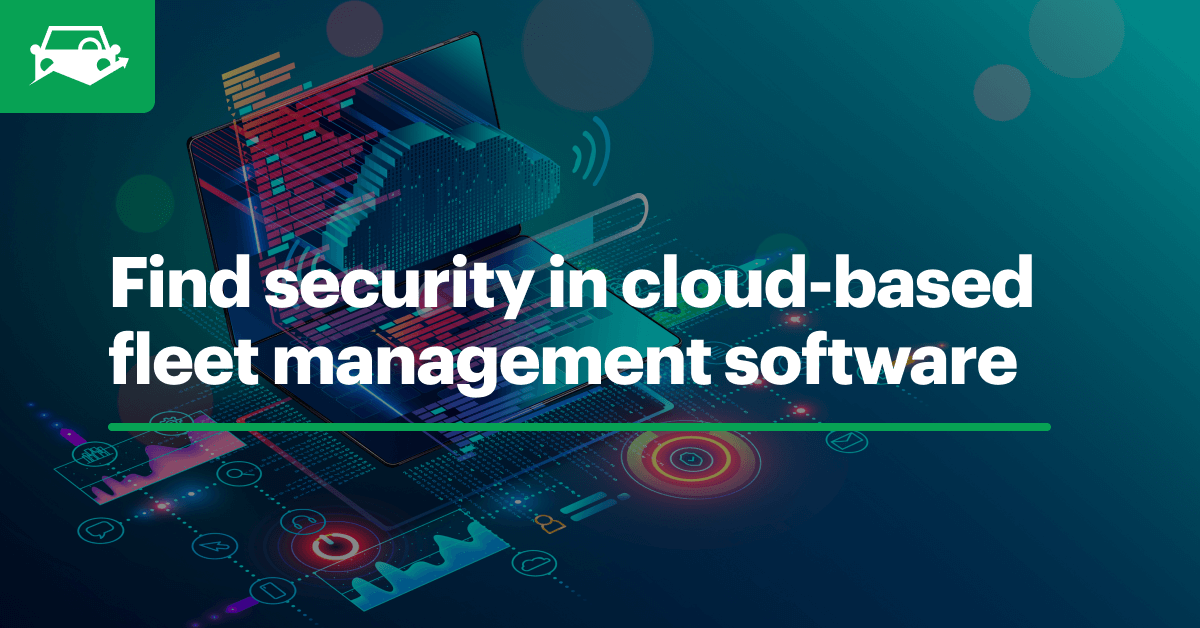Cloud-based fleet management software keeps users current on product updates with little to no downtime. Plus, no hardware means no overhead, maintenance costs or headaches for IT.

Cloud Computing Contributions
Cloud-based fleet management software is made possible thanks to cloud computing. Cloud computing is on-demand access to computing resources (for example: apps, networking capabilities and data storage) provided via the internet through a remote data center managed by a cloud services provider (CSP) that charges a monthly or usage-based fee.[1] Many companies and individuals rely on CSPs for storing and/or sharing administrative, financial, academic and other important documents.
Cloud computing enables companies to build expansive software products and services hosted on off-site servers, meaning there is no hardware to take up space or maintain, among other benefits. This is a boon for fleet’s wishing to develop their own cloud-based fleet management software and for companies moving legacy hardware/software systems to the cloud.
Pain Points of Migrating from Legacy Systems to the Cloud
There is quite a substantial difference between cloud-based software and legacy systems. Legacy systems are so called because they become outdated and cannot interact with newer integrations but are still integral to business practices. Legacy systems are typically on-site hardware and/or software computer resources (hard drives, servers, installable software, etc.) that take up space and need to be maintained and manually updated. Typically, they have cost per user or cost per device plans.
While many fleet management software companies are making the jump from legacy systems to cloud-based systems, there are key challenges they must work through during the transition, including:[1]
-
Analyzing Organizational Context: Before moving from a legacy system to the cloud, companies must get a clear understanding of organizational constraints and impact on stakeholders and infrastructure, including cost of hardware dismantling and disposal, licensing management, training, required staffing to support new systems, etc.
-
Understanding Migration Requirements: Knowing what’s needed as far as data storage, network and response times and security is key in legacy to cloud migration.
-
Understanding Legacy Systems: Legacy systems may not retain full functionality when rehosted (i.e. relocated in full from the company’s original server to a cloud server), so it’s necessary to determine which legacy system components are compatible with the cloud and which will need to be updated.
-
Code Refactoring and Rewriting: To get the most out of moving to cloud-based software and to ensure full operability of all product features upon cloud migration, companies may opt to refactor or rewrite code. Refactoring is a method of restructuring existing code for cloud optimization and, while time consuming, can actually be automated. Rewriting code is far more in-depth and may offer a more ideally-suited cloud architecture, but takes extensive time and resources.[3]
-
Tenant Isolation: When moving from legacy to cloud software, it’s important that multiple users (tenants) can be active on the same cloud platform while maintaining optimal performance and data security.
-
Testing: Multiple tests, including inoperability, multi-tenancy, network connectivity, performance, scalability and security, should be run before rolling out cloud-based software.
When a company makes the switch from a legacy to a cloud-based system, their customers typically feel the trickle down from these challenges. With all that goes into cloud migration, some concerns to consider are system crashes, security breaches and data loss.

Advantages of Cloud-based Software
Companies specializing in cloud-based software, also called software as a service (SaaS), are more adept at living in the cloud computing space. Essentially, SaaS companies "rent space" from CSPs to develop product software. They manage the software’s security, data and all other aspects of the product in the cloud while the CSP manages the actual servers. Using a SaaS provider for your fleet management software provides such advantages as:
-
Unlimited Access: Cloud-based software isn’t limited to a specific computer where the software is installed; it can be accessed by multiple users, on multiple devices as needed through a web browser or mobile app.
-
Mobile Capabilities: Cloud-based fleet management software can sync directly to its mobile app to share information in real time, so details can be accessed anytime, from anywhere.
-
Integrations and APIs: Cloud-based software provides features like integrations and application programming interfaces (APIs) that allow you to securely pull data from multiple fleet management solutions into one central location for optimized reporting and analysis.
-
Instant Updates: Product, feature and general software updates can all be pushed through instantly with cloud-based software. This means you’ll always have the latest version of the product without having to manually update software or equipment—all at no additional charge.
-
No Equipment: Cloud-based software doesn’t require purchasing additional servers or housing units, so it takes up no space and there is no maintenance required.
-
Lower Price Tag: Since there is no equipment to house or maintain, and because cloud-based software is scalable, the cost is typically lower.
-
Easy Access: Cloud-based software is easily accessible, yet secure. Users can log in through their mobile app or through a web browser using secure login credentials. To make access to Fleetio easier and more secure, we use a single sign-on framework.
-
Security: Cloud-based software providers understand the need for cybersecurity and data encryption and are always working to mitigate the latest security threats. Data encryption at all stages—from rest to storage and downloading—minimizes its risk of falling into the wrong hands.

Because cloud-based fleet management software is designed and built specifically to be hosted in the cloud, unlike legacy systems, it provides a more secure service and allows for a more robust, cost-friendly product. When choosing a fleet management software for your fleet, take into consideration cost, security, data management, your fleet’s overall needs and what solutions (such as GPS tracking or ELDs) you may want to integrate with the software.
Curious to see how Fleetio can help streamline your fleet management processes? Start your free trial or request a demo of Fleetio today!
Sources
1 What is Cloud Computing? | IBM
2 Challenges in Migrating Legacy Software Systems to the Cloud: An Empirical Study



